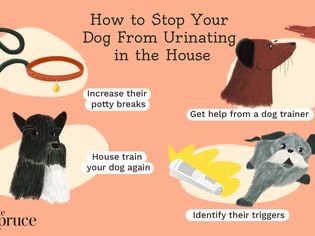Can dogs eat edamame? Yes, your pup can enjoy small amounts of plain, shelled edamame as an occasional treat, says Rebecca Greenstein, DVM. Edamame refers to young, green soybeans harvested before they fully ripen. Popular in various human cuisines, especially East Asian dishes, these beans boast a strong nutritional profile.
Here’s what you need to know about safely feeding your pup this tasty legume.
Meet the Expert
Dr. Rebecca Greenstein, DVM, veterinary medical advisor for Rover
Benefits of Edamame for Dogs
First, let’s take a look at some of the benefits of edamame for dogs.
- Low in calories: Compared to many other treats, edamame is relatively low in calories, providing only 14 calories per tablespoon of shelled beans. This makes it a good option for dogs that need to maintain or lose weight.
- High in protein: Edamame is an excellent source of protein, which is important for maintaining and supporting your dog’s muscles, fur, skin, nails, immune system, and enzyme production.
- Rich in fiber: The fiber content in edamame supports a healthy digestive system. It helps maintain regular bowel movements and can prevent constipation.
- Packed with vitamins and minerals: Edamame is loaded with essential vitamins and minerals, such as vitamin C, vitamin K, calcium, and folate. These nutrients support reduced inflammation, blood clotting, bone strength, and metabolic processes, respectively.
Health Risks and Considerations
While edamame can be a nutritious treat for dogs, it’s important to be aware of potential health risks. Here are some key considerations to keep in mind.
Digestive Issues
“Edamame is high in fiber, so for dogs who aren’t used to high fiber intake, they might cause GI upset or flatulence, but only if eaten in large amounts,” Greenstein says.
To avoid this, stick to small portions and gradually introduce edamame into your dog’s diet to avoid overwhelming their digestive system.
Obstruction and Choking Hazard
“The tough, chewy, fibrous pod is technically safe to ingest, but in large amounts, could create an obstructive effect in the gut,” Greenstein says.
As such, Greenstein suggests sticking to shelled edamame for your pup's safety.
Allergies
“Edamame are soybeans, so while soy allergies aren’t particularly common in dogs, it’s possible your dog might be allergic to them,” Greenstein says.
Symptoms of an allergic reaction can include itching, swelling, fur loss, gastrointestinal upset, and respiratory issues. If you notice any adverse reactions after feeding your dog edamame, discontinue feeding and call your veterinarian.
Seasonings and Additives
One of the biggest risks of edamame isn’t associated with the beans themselves, but with what’s added to them. Edamame frequently comes seasoned with salt, garlic, oil, or other additives that can be harmful to dogs. Garlic and onion are particularly toxic to dogs and should be kept out of their diet.
To keep your pup safe, always serve plain, unseasoned edamame.
Tips for Feeding Edamame to Dogs
- Remove the beans from the pod: Edamame naturally comes in pods, which are tough and can be hard for dogs to digest. Always pop the beans out of the pod before serving them to your dog. This also helps reduce the risk of choking.
- Skip the seasonings: Edamame often comes pre-seasoned with salt or other seasonings that aren’t good for dogs. Make sure you choose plain edamame, without any added salt, oils, or sauces. And don’t add anything yourself.
- Choose simple cooking methods: Plain edamame that’s steamed, boiled, microwaved, or frozen is safe for your pup. If using frozen edamame, let it thaw slightly or cook it before serving to your dog.
- Add to dog's food or serve on its own: You can add a few edamame beans to your dog’s food as a topper, or simply give them the beans on their own as a treat. Due to their small size and low calorie content, they also work well as training treats.
- Introduce slowly: When offering edamame for the first time, start with a small amount to see how your dog reacts. Watch for any signs of allergies or digestive issues. If all goes well, you can gradually increase the amount.
How Much Edamame Can You Feed Your Dog?
Moderation is key when it comes to giving your dog edamame. “Treats, even healthy ones, should make up no more than 10% of your dog’s daily calorie intake,” Greenstein says.
As for portion size, here are some general guidelines:
- Small dogs: 1-2 tablespoons edamame beans once or twice weekly.
- Medium dogs: 2-3 tablespoons edamame beans once or twice weekly.
- Large dogs: 3-5 tablespoons edamame beans once or twice weekly.
Other Safe Veggies for Dogs
There are many other veggies that dogs can safely enjoy as an occasional treat, some of which include:
- Green beans
- Peas
- Carrots
- Cucumbers
- Sweet potatoes
- Zucchini
- Pumpkin
- Broccoli
- Spinach
- Bell peppers
- Cabbage
- Celery
- Cauliflower
- Asparagus
- Lettuce
It's recommended to always consult with a veterinarian before introducing a new food to your dog’s diet.










Comments on " Can Dogs Eat Edamame? Safety, Benefits, and Prep Tips" :